Because of its St. Lawrence River location, Montréal has thrived as a global center of communications and trade. Although Jacques Cartier arrived here in 1535 and claimed the region for his King, François I of France, Ville Marie de Mont-Réal was not established here by Paul de Chomedey until 1642. Now, Montréal, the second-largest French-speaking metropolis in the world, is a remnant of this initial community.
Despite Montreal's vastness, the tourist-attractive areas are located in relatively small districts. The Centre-Ville (downtown) neighborhood is home to many important museums and art galleries, as well as Rue Sherbrooke, arguably the city's most opulent boulevard. Many museums and other organizations are situated there, making it the hub of the city. The major avenue for shopping in Montréal is Rue Ste-Cathérine, a busy boulevard dotted with department stores, shops, and eateries.
The Pointe-à-Callière museum has the ancient foundations and streets of the city's original site, Vieux-Montreal. Due to its historic structures, this area of the city is the most gorgeous. It served as the center of the colonial town. The majority of the historic sites are located here, along with the well-liked waterfront promenade along the Vieux-Port (Old Port).
Less tourists spend time at The Plateau, yet it is the core of French-speaking Montreal. Because of its upscale stores, eateries, and sidewalk cafes, walking down Rue St. Denis frequently gives the impression that one is in Paris. Here, along Rue St. Denis and elsewhere in this district that was largely shaped by successive waves of immigrants, are some of the city's most well-known eateries. Mile End, a small cluster of streets with particularly Italian, Portuguese, or Greek atmospheres, is located on its far extremity.
With our list of the top attractions and things to do in Montreal, you can learn more about the greatest locations to visit in this diverse city.
1. Explore the Old Montreal neighborhood (Vieux-Montréal)
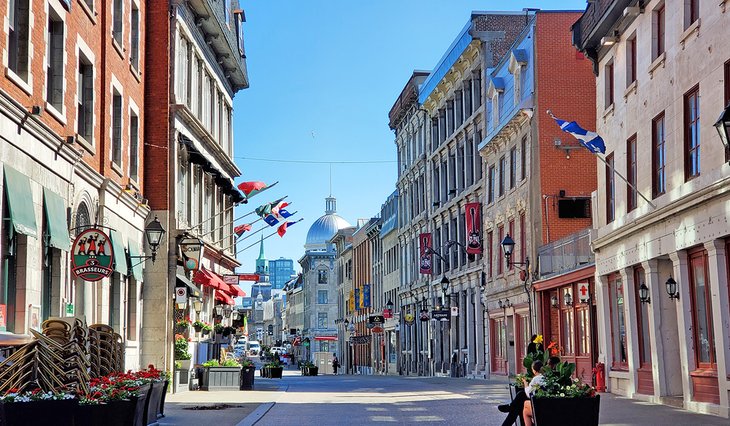
The tourist heart of Montréal is Old Montréal. The region has the charming atmosphere of a Parisian quarter and is home to a great concentration of structures from the 17th, 18th, and 19th centuries. Today, several of these old structures serve as inns, eateries, galleries, and gift shops. This is the greatest place to stay if you want to use the city as a base for a few days of sightseeing.
You may easily explore the city's numerous historic sites, streets, and landmarks by foot. The Notre-Dame Basilica, strolling down Rue Saint-Paul, exploring Bonsecours Market, and taking in the open-air meeting area of Place Jacques-Cartier are just a few of the numerous things to do in this city. By the waterfront are the enormous Ferris wheel (La Grand roue de Montréal) and the Tyrolienne MTL zipline for a little urban adventure.
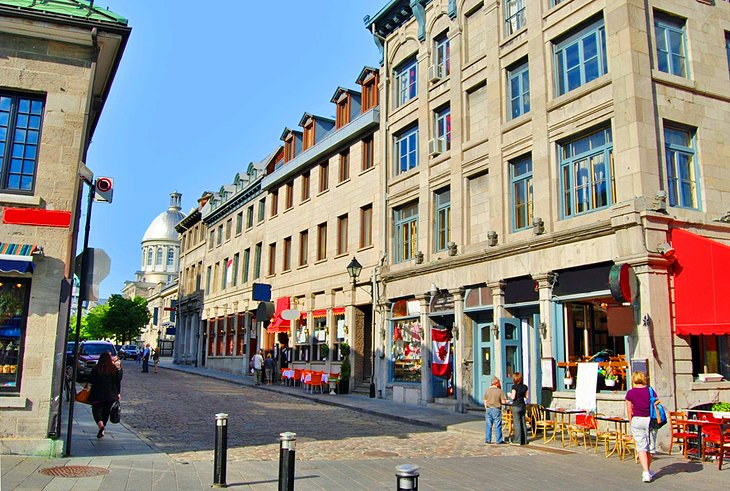
Old Montreal comes alive at night with restaurants and terraces dotting the streets. You can eat outside throughout the summer, either on rooftop terraces or down the street.
2. Go about the Old Port (Vieux-Port)
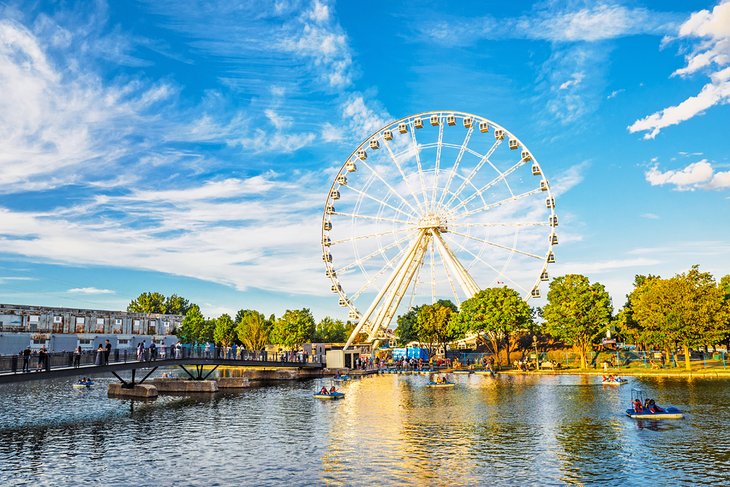
You'll likely find yourself in the bustling Old Port neighborhood near the Saint Lawrence River while you explore Old Montreal (Vieux-Port). You can do a lot of fun things here, like ride the enormous Ferris wheel or climb the well-known clock tower, or you may scream your way down a zipline that crosses wide expanses of water from terrifying heights.
The area's ten unique public art installations can be viewed while strolling around; alternatively, you can watch a performance at the IMAX or brush up on your knowledge at the Montreal Science Center. Get a coffee, sit on one of the sunny terraces, and take it all in if even those options sound tiresome.

Boat trips leave from these docks during the summer. There is even a man-made beach with views of the city or the river at the base of the clocktower if you really want to soak up the sun. Put on your skates and spin about on the sizable ice rink in the winter.
3. See the Panorama from Mount Royal
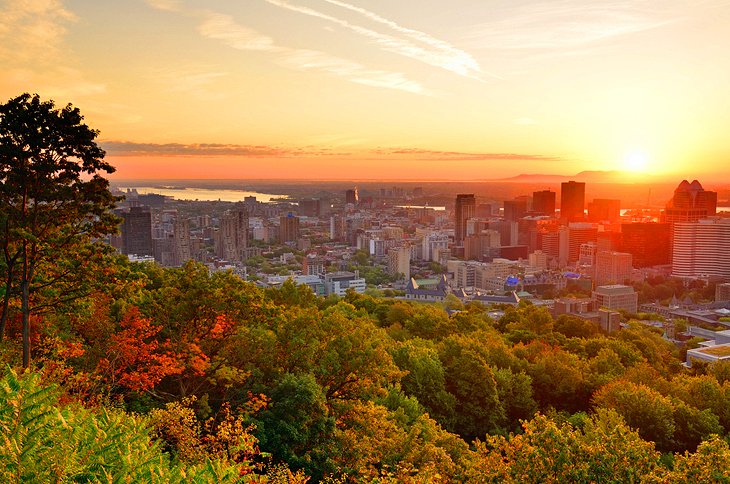
Being the green lung close to the city center, Mont-Royal stands 233 meters above the metropolis. When strolling through this gorgeous park, one can observe memorials to Jacques Cartier and King George VI, spend time by Lac-aux-Castors, and take in the cemetery on the western slope where the city's various ethnic communities have long since interred their dead in harmony.
A superb view of the entire 51-kilometer length of the Île de Montréal and the St. Lawrence may be seen from the peak, or more precisely from a platform below the cross. The Adirondack Mountains in the United States of America can be seen on clear days.
4. Jardin Botanique (Botanical Garden)
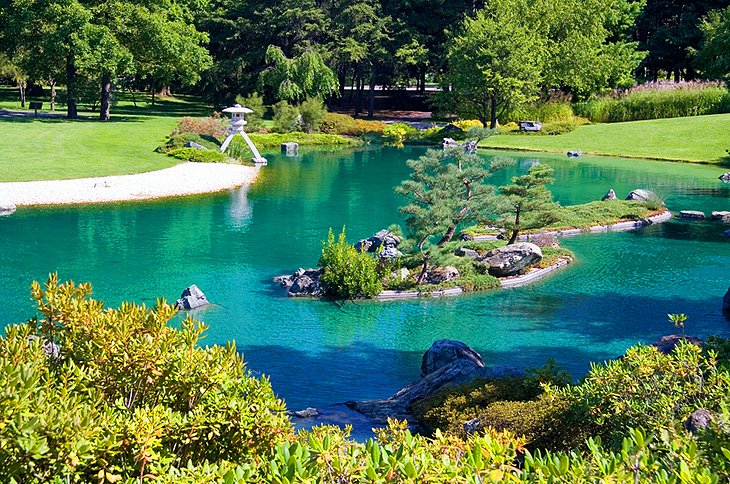
Montreal's brilliantly inventive floral garden is located high above the city in Park Maisonneuve (Pie IX Metro), which was the venue of the 1976 Summer Olympic Games. A broad variety of climates are represented by the various plants, which are grown in 30 themed gardens and 10 show greenhouses. Aside from the stunning Japanese and Chinese gardens, there are also outdoor spaces dedicated to alpine, aquatic, medicinal, utilitarian, and even deadly plants.
The rose displays are breathtaking, and a garden featuring flora that First Nations peoples grow or utilize is very fascinating. A tropical rain forest, ferns, orchids, bonsai, bromeliads, and penjings can all be found in towering greenhouses (miniature Chinese trees). Within the grounds, there is a sizable arboretum, an intriguing insectarium, and ponds with a wide range of bird species.
5. Notre-Dame Basilica,
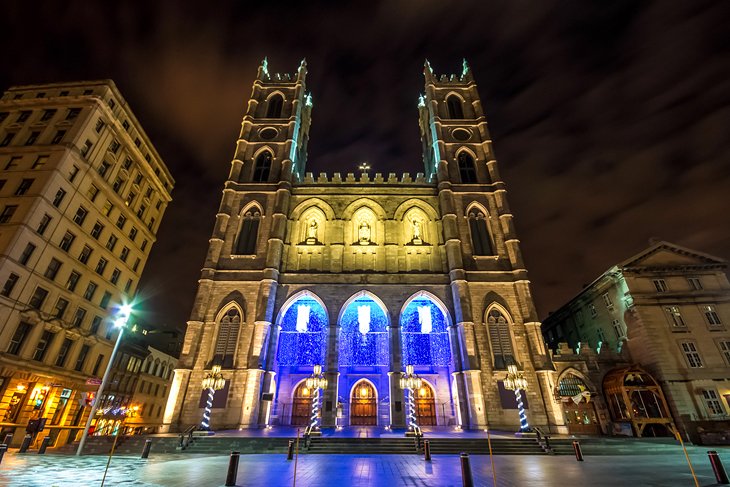
The 1656-founded Notre-Dame Basilica in Montréal is the city's oldest church and is now much larger than it was. The neo-Gothic façade's twin towers face Place d'Armes. Victor Bourgeau created the complex and opulent interior.
The 7,000-pipe organ built by the Casavant Frères company, the magnificently carved pulpit by artist Louis-Philippe Hébert (1850–1917), and the stained-glass windows depicting events from Montreal's inception are highlights. The admission ticket to the basilica includes a 20-minute tour, or you can take a one-hour trip that gives more historical information and access to private sections, including the second balcony and crypt.
6. Saint Joseph's Oratory, or Oratoire Saint-Joseph
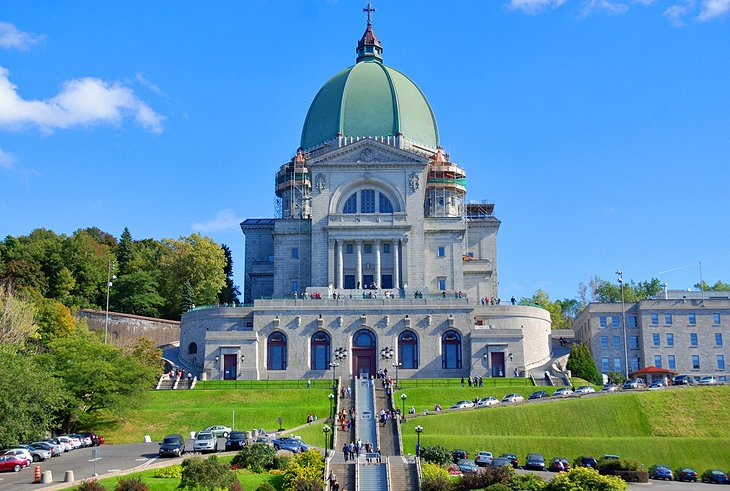
The patron saint of Canada is honored in the Oratoire Saint-Joseph, which is close to Mount Royal Park's western entrance. With its massive 1924 Renaissance-style domed basilica, it is a holy site for pilgrims.
In 1904, Brother André of the Congrégation de Sainte-Croix had already constructed a modest chapel nearby, where he carried out healing miracles that led to his canonization in 1982. In the original chapel, his tomb is located in one of the sanctuary areas.
In a separate chapel, votive offerings are on display. Behind the chapel, a cloister provides access to Mont-Royal. The observatory offers a nice northwest view of Montréal and Lac Saint-Louis.
7. Parc Jean Drapeau
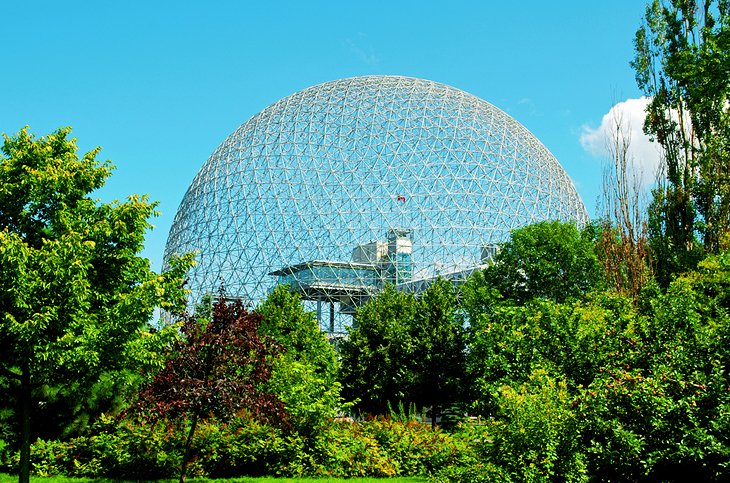
Expo '67 was held on Île Sainte-Hélène, which was named for Samuel de Champlain's wife, and on the man-made island of Notre-Dame. They currently go by the name Park Jean-Drapeau and provide a lot of family-friendly attractions.
The Biosphere, a relic of the 1967 world's fair, is now a museum devoted to environmental concerns. The building, which is the largest of its kind in the world, is shaped like a sphere. Additional tourist attractions on the islands include the rides and games of La Ronde Amusement Park, the historic 1820 British arsenal at the Stewart Museum, Bassin Olympique (where the Olympic rowing events were conducted), and race course Circuit Gilles Villeneuve.
8. Museum of Fine Arts (Fine Arts Museum)

The Musée des Beaux Arts is the oldest museum in Canada and has large collections of painting, sculpture, and new media. Its remarkable holdings of World Cultures and Mediterranean Archaeology number approximately 10,000 artifacts, and there are excellent collections of African, Asian, and Islamic art, as well as art from North and South America.
The collection of more than 1,400 paintings, sculptures, sketches, and prints is especially strong in works from the Dutch Golden Period and features masterpieces by Pieter Bruegel the Younger, Canaletto, El Greco, Gainsborough, Goya, Mantegna, Poussin, Rembrandt, Tiepolo, and Veronese. With pieces by Cézanne, Dali, Miró, Monet, Derain, Kandinsky, Matisse, Picasso, Rodin, Otto Dix, and other significant painters, the collections extend through the Realists and Impressionists to modern art. The expansive McGill University campus is close by the museum.
9. Pointe-à-Callière
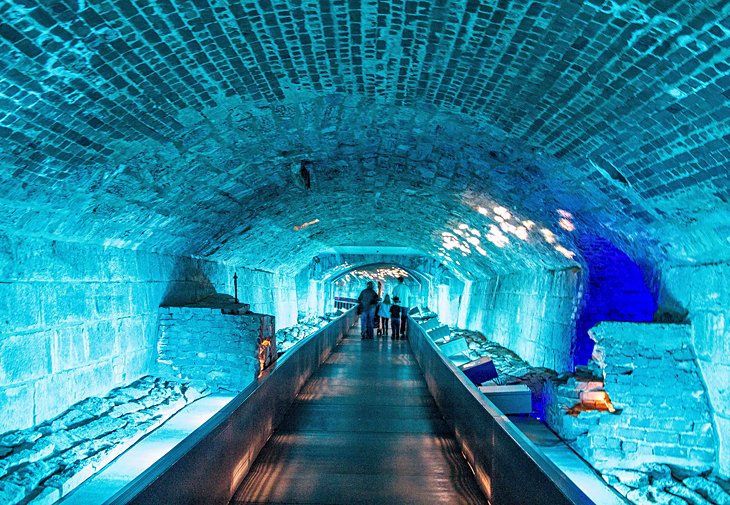
The Pointe-à-Callière, which is today distinguished by a spectacular modern structure housing a museum of archaeology and history, is located at one corner of Place Royale in Old Montreal. Place Royale, where the market and parade field existed until newer government buildings removed them, was the hub of life in Montréal's early and colonial days. Yet, beneath present-day Montréal, there are still traces of these earlier streets and foundations, which you can examine during a trip to the museum.
You can wander amid the old stone-paved streets, drainage ditches, and ground floors of buildings from the 17th century as you travel through the city's past underneath. As you move through the museum, the narrative is revealed in layers of history through relics, maps, and exhibitions. Unique displays offer a comprehensive look at history and archaeology from throughout the world.
10. Place des Arts

The Place des Arts is Canada's largest complex of its sort, with a whole area devoted to the visual and performing arts. The Montreal Symphony Orchestra, Les Grands Ballets Canadiens, and the Opéra de Montréal all call this place home. The many stages and rehearsal halls here serve as settings for a wide variety of theater, music, dance, films, and events. They surround a sizable esplanade that is adorned with artwork, fountains, and water falls and is a well-liked location for events. The most notable of these is the annual summer Festival International du Jazz de Montréal held in late June and early July, attracting tourists from all over the world and bringing in some of the biggest names in jazz.
a visit to the Montréal Museum of Contemporary Art is highly recommended, especially as young French-Canadian artists are given special attention there.
11. Shop at Jean Talon and Atwater Markets
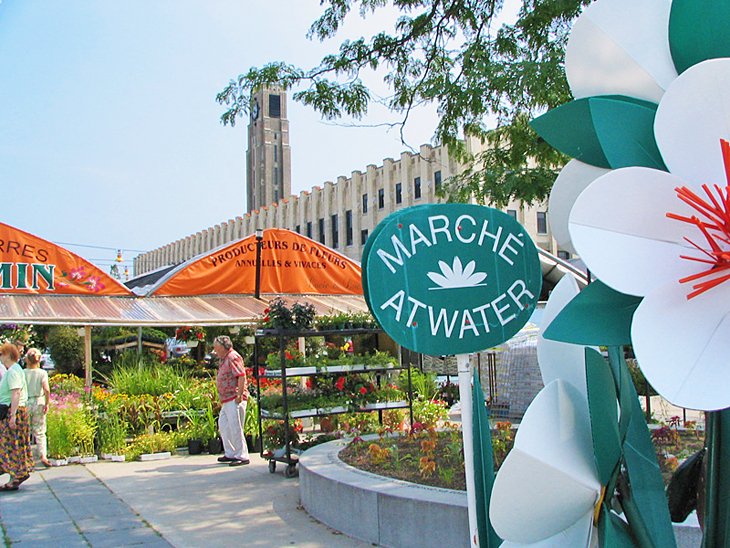
The Atwater Market and Jean Talon Market are Montréal's busiest public markets and well worth a visit for their atmosphere and local fare and goods. These are similar institutions with many of the same merchants.
The markets, which are housed in structures resembling warehouses, have merchants offering fresh produce, flowers, meats, fish, cheese, baked goods, and speciality delicacies. Together with restaurants and bakeries selling delectable pastries, you'll discover maple syrup and candy, dried wild blueberries, homemade jams and preserves, the best cheeses in the area, and dried wild blueberries. Locals enjoy stopping at the markets on Saturday mornings for a flaky croissant and a cup of coffee.
12. St. Mary, Queen of the World
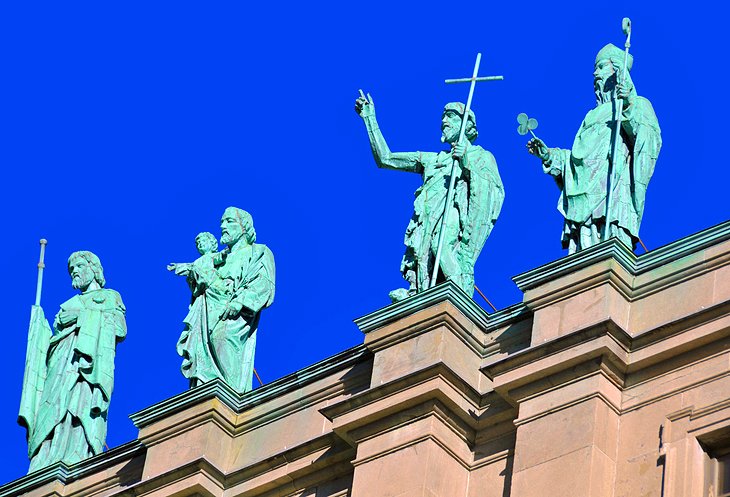
East of Place du Canada, the Catholic Mary Queen of the World Cathedral was created in 1894 as a scaled-down replica of St. Peter's in Rome. The enormous statues were all created by Olindo Gratton between 1892 and 1898, and they all depict the patron saints of Montreal's 13 parishes throughout the 19th century.
Discover our favorites activities and attractions to visit in Montreal during your next getaway! https://t.co/PpoabLu9ql pic.twitter.com/wDhsQ5uHtw
— Hotel Le Roberval (@Hotel_Roberval) May 24, 2017
The Philippe Hébert crucifix that is perched atop the marble baptismal font is the most significant piece of interior art. Nine paintings, seven of which are by Georges Delfosse, recount the turbulent history of Montréal.
McCord Museum 13.
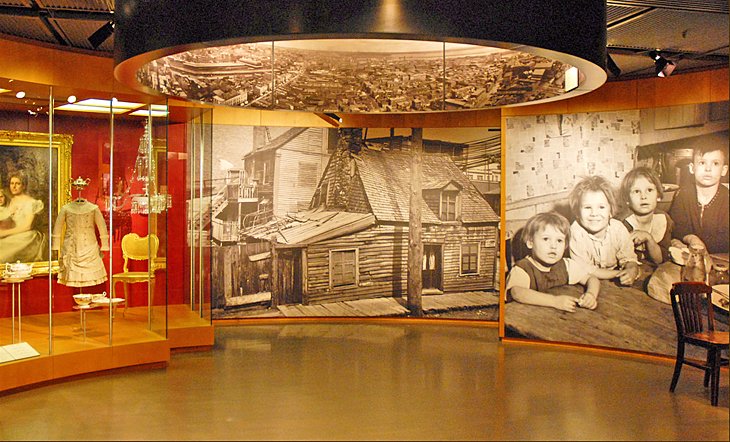
Outstanding displays on Canada's social history, particularly those of native peoples, are housed at the McCord Museum. More than 20,000 items—including creations by Montreal fashion designers—are included in its collections of costumes, apparel, accessories, quilts, and other handmade fabrics.
The image of early Canadian life is given color and home detail by more than a thousand pieces of furniture, silver, pottery, glass, and items connected to food and household usage, as well as toys, sporting goods, and folk art. Clothing and accessories, hunting and fishing gear, combat gear, kitchenware, ceremonial items, and artwork are among the artifacts and works of art created by the First Nations peoples. Archaeological discoveries from the earliest aboriginal societies are also included.
14. Saint-Louis Plaza and Rue Denis
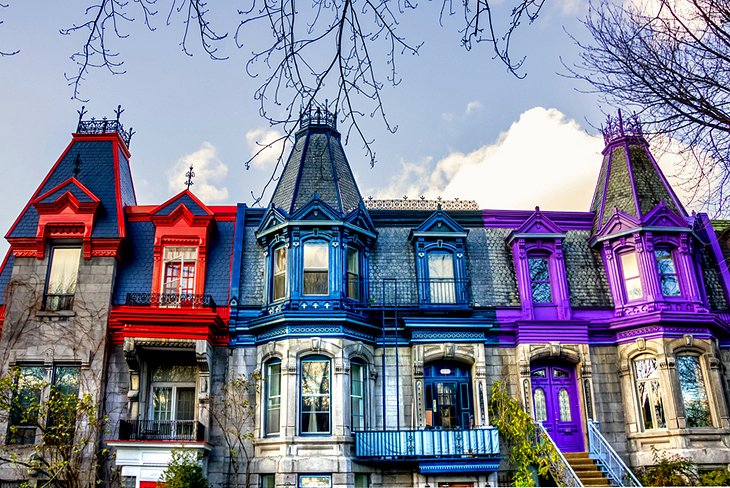
One of Montréal's beautiful historic squares, Square Saint-Louis, is located close to the Sherbrooke Metro Station and is situated in a pre-war French-Canadian neighborhood. There are still a few charming Victorian homes in the small lanes that surround the square, which is covered by trees. Some now contain inviting restaurants.
One of Montréal's trendiest retail, dining, and entertainment districts is Rue St. Denis, which runs parallel to St. Laurent and borders the square to the east. Boutiques, bistros, and cafés have been incorporated into old structures. At one end, St. Denis begins in the student-friendly Quartier Latin district (next to the Grande Bibliothèque and the Université du Québec à Montréal) and travels west into the hip Plateau neighborhood with its independent designers and chef-run eateries.
15. National Historic Site of the Lachine Canal
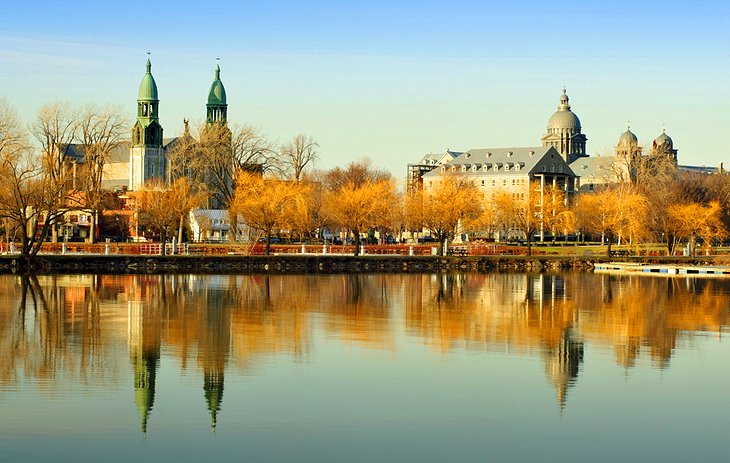
The first settlers who traveled up the St. Lawrence River in search of a path to China in the 17th century gave birth to Lachine, which is located on the southeast bank of Montréal Island (in Lac St.-Louis) (in French, "la Chine"). In order to avoid the Lachine Rapids, the 14.4-kilometer Lachine Canal was constructed in 1825. But, it has been many years since it was last used for shipping, and today it is a park that provides numerous opportunity for pleasant walks along the canal banks. Its entire length is bordered by a bike path that runs through an expansive green area. You may also take a boat tour of the canal.
16. in Chinatown.
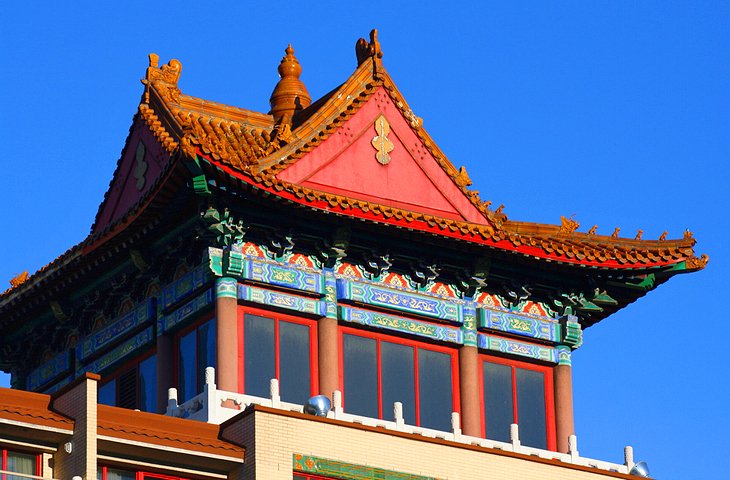
Chinese gates delineate the core of Montréal's Chinatown, which is located along Rue de la Gauchetière. This vibrant area was established in the late 1860s when many Chinese immigrants who had come to the country to work in the mines and on the railroad moved into the city in quest of a better living. Chinatown is now home to a variety of Asian eateries and retail establishments and is a popular dining destination for both locals and visitors.
17. Participate in the Montreal Grand Rout
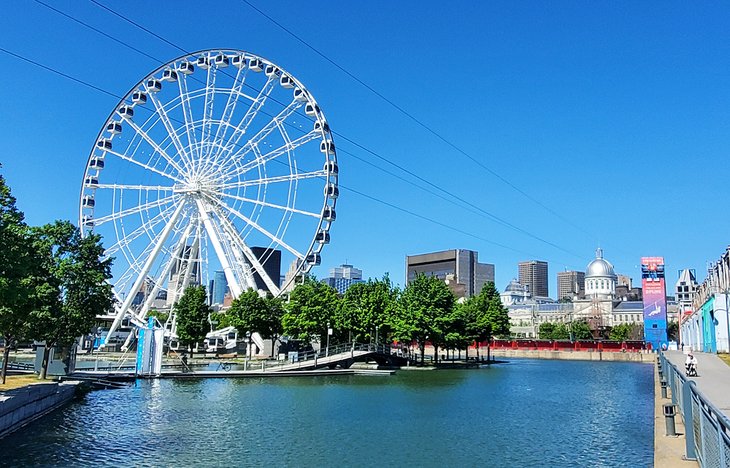
It's difficult to miss La Grande Rou de Montréal, a tall Ferris wheel, when at the Old Port (Vieux Port) neighborhood. The big wheel is an astounding 60 meters high and features 42 climate-controlled, eight-person gondolas (heat in the winter, air conditioning in the summer).
The Jacque Cartier Bridge, the Saint Lawrence Seaway, and the former site of the Expo are all visible from the top of the building, as are the remainder of Old Montreal and the rest of the city. You can see about 30 kilometers in all directions on a clear day.
Book the VIP gondola if you want to take your level of luxury up a notch. This piece features a glass floor and four sizable chairs covered in the best Italian leather.
18. Montreal Science Center
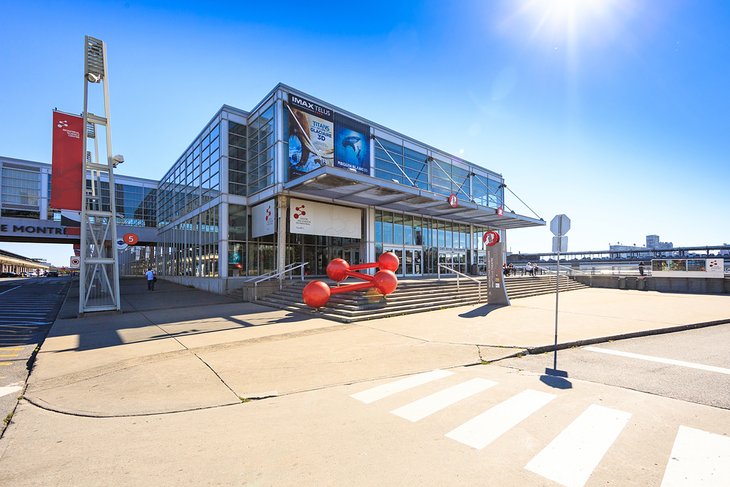
Conveniently positioned in the middle of the excitement in the Old Port (Vieux Port) region lies the Montreal Science Centre. all. ...
The Fabrik exhibit, where kids can build their very own inventive items using the variety of available materials in an assembly line style of production, and the Clic! exhibit, where you can build just about anything with oddly shaped building blocks that snap together in unusual ways, are two of the highlights inside.

